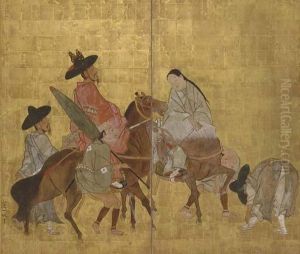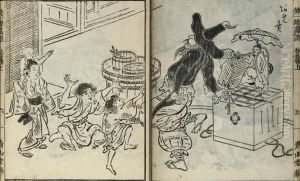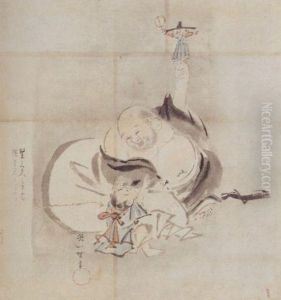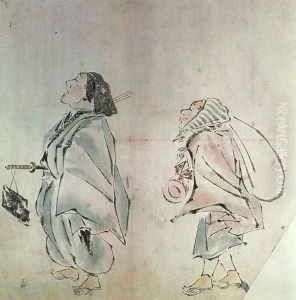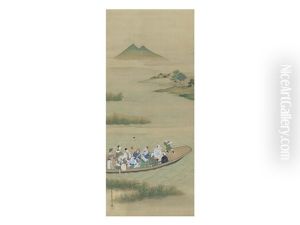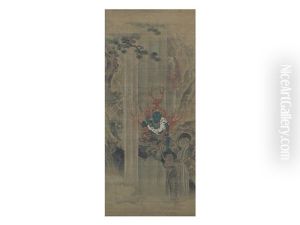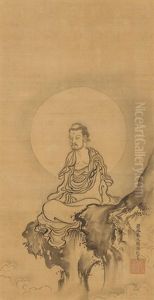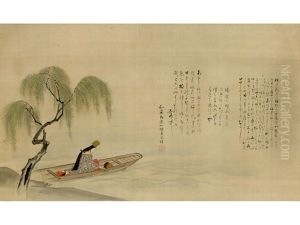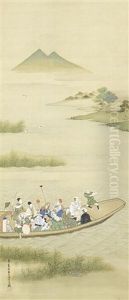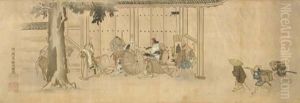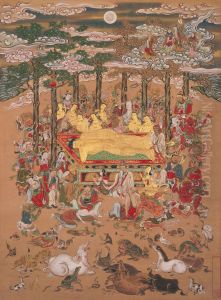Hanabusa Itcho Paintings
Hanabusa Itcho, born in 1652, was a prominent Japanese painter and poet during the Edo period. He is known for his distinctive style that diverged from the dominant Kanō school, embracing instead the more playful and common subjects of the ukiyo-e genre. Itcho's early life saw him training under the Kanō school, which was the leading style of painting, supported by the military government of the time. However, his artistic journey took a significant turn due to his rebellious spirit and interest in the burgeoning popular culture of Edo (modern-day Tokyo).
Itcho's work is characterized by its wit, humor, and the delicate portrayal of everyday life in Edo. His paintings often featured common folks—such as courtesans, street vendors, and entertainers—capturing the vibrant urban culture with a keen eye and a gentle satire. This was a departure from the more formal, classical subjects preferred by the Kanō school and the ruling samurai class.
In 1698, Itcho faced exile to the Oshima Island due to an offense that remains somewhat mysterious but is often attributed to his satirical depictions of the shogunate. This period of isolation lasted for about 11 years, during which he continued to produce art, refining his unique style and exploring new themes. His exile experience deeply informed his later works, which displayed an increased depth and sensitivity towards the human condition.
Upon his return to Edo in 1709, Itcho's work gained new popularity. He established a school and had many disciples, influencing the direction of Edo period art by integrating elements of the Rinpa and ukiyo-e styles. Despite his earlier conflict with the authorities, he became one of the era's most celebrated artists, leaving behind a legacy that would influence Japanese art for generations. Hanabusa Itcho's death in 1724 marked the end of a remarkable career that had seen both great adversity and acclaim, but his art continues to be celebrated for its unique blend of humor, empathy, and detailed observation of the Edo period's social fabric.
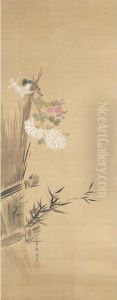
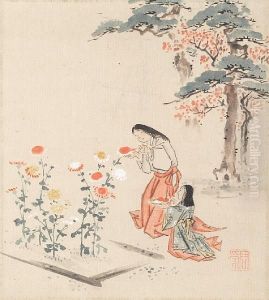
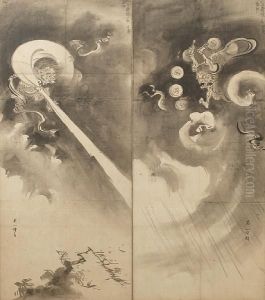
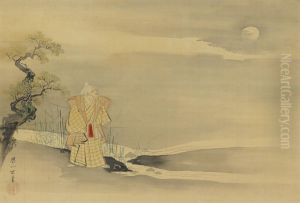
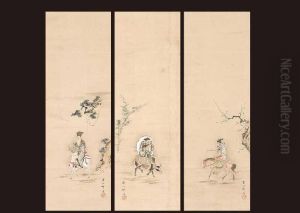
![Sans Titre [femme Assise, Vue De Dos, Appuyee Contreune Cloison]](https://www.niceartgallery.com/imgs/690543/s/hanabusa-itcho-sans-titre-femme-assise-vue-de-dos-appuyee-contreune-cloison-f3eafe30.jpg)
